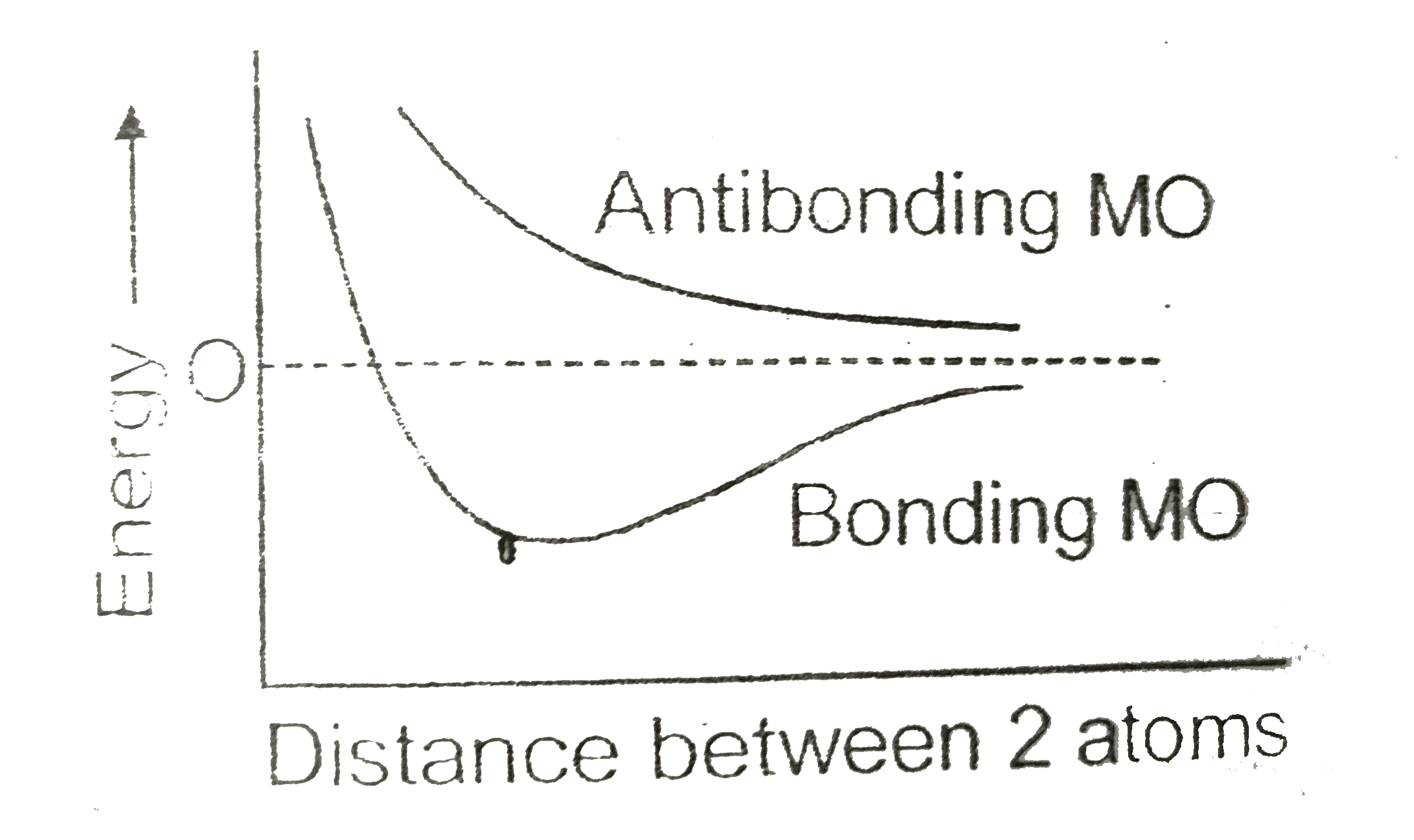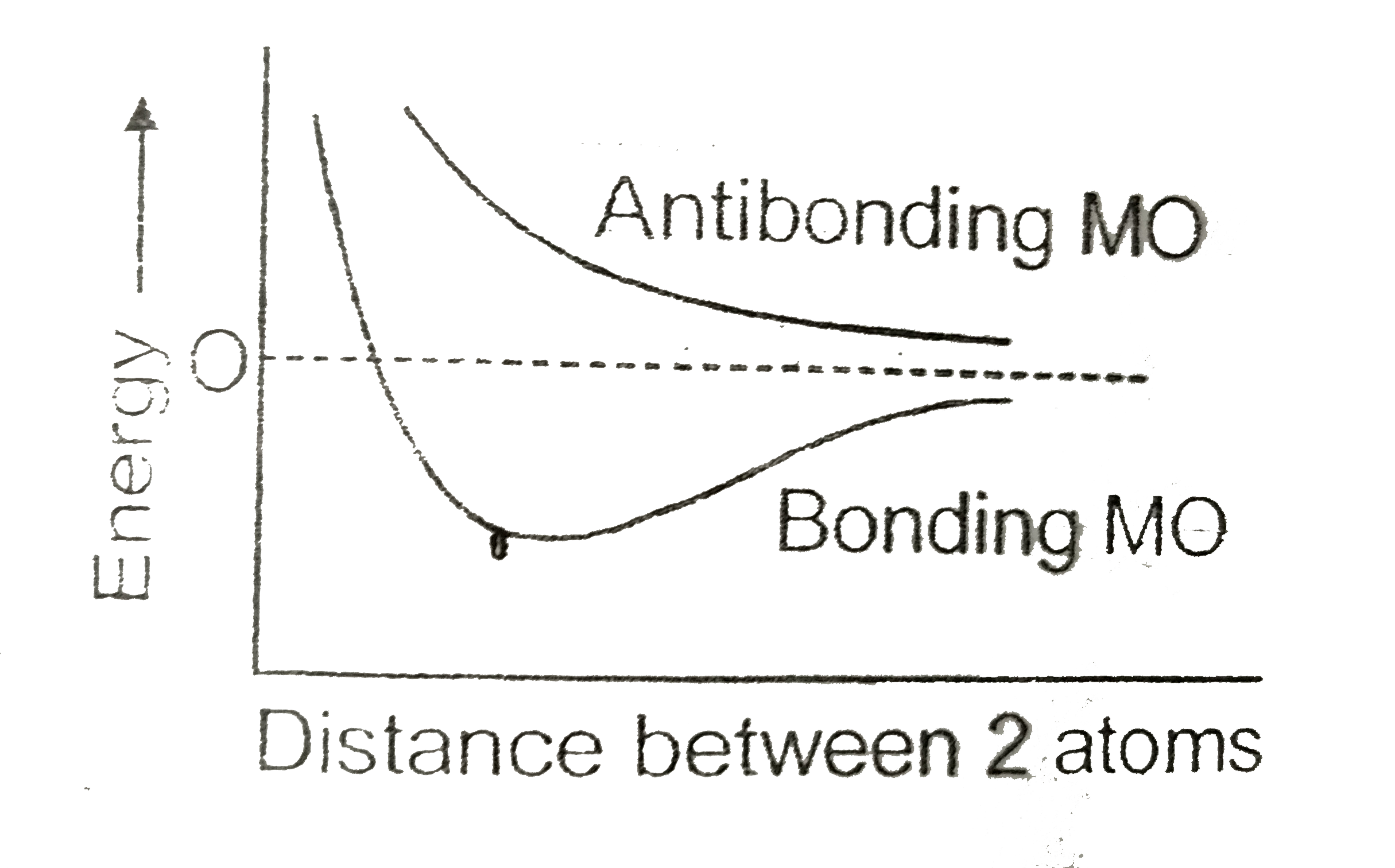Statement 1: The addition of electron in antibonding M.O. decreases bond order.
Statement 2: Antibonding electrons tend to bring the atoms close together.
Statemetn-1 is true, Statrment-2 is also true, Statement -2 is the correct explanation of statement-1
Statement -1 is true , Statement 2 is also true, Statement-2 is not the correct ezplanation of Statement-5
Statement-1 is true, Statement-2 is false.
Statement-1 is false, Statement-2 is true.
The correct Answer is:c
Correct statement-2 Bond order =12[Nb−Na]
Similar Questions
Number of antibonding electrons in O−2 molecular ion is :
View SolutionH+2 ion contains one electron in bonding and one in antibonding molecular orbitals.
View SolutionThe number of antibonding electron pairs in O−2
View SolutionThe molecular orbital with the lowest eenrgy is filled first. Thus σ(1s) is filled first where as 'σ⋅(2p) isfilled in thelast, also the maximum number of electron in bonding and antibonding molecular orbitals are according to Pauli and Hund's rule. As an electron in an antibonding molecular orbital cancels out the stability introduced by the electron in a bonding molecular orbital, it means that in order for bonding of atoms to occur there should be an excess of bonding electron sover antibonding electrons. In case where the number of bonding and antibonding electrons are equal, no bond will be formed between the atoms. With the help of above discussion, we can define easily bond order, relative bond length, relative stability and magnetic properties for a molecule.
According to MOT which statement is correct about Boron molecule ?
View SolutionStatement-1 : Ionization energy of s-electrons are more than the p-electrons for the same shell.
Statement-2 : s electrons are closer to the nucleus than p-electrons, hence, more tightly attached.
View SolutionStatement-1: In Photoelectric effect , electrons absorbing the photon can not be a free electron.
Statement -2: A free electron can't absorb a photon completely
View SolutionStatement-1 : In C2H6 and B2H6 both 3c-2e bond is present
Statement-2: In 3c-2e bond, 2-electrons are shared between three atoms.
View SolutionOut of bonding and antibonding M.O, which is filled first and why?
View SolutionMolecular orbital (MOT) the atoms in a molecule are supposed to loose their individual control over the electrons . The nuclei of the bonded atoms are considered to be present at equilibrium in inter-nuclear positions . The orbitals where the probability of finding electrons is maximum are called molecular orbitals extending over 2 or more nuclei when a pair of atomic orbitals combine and give rise to a pair of molecular MO's in internuclear region but decreased for antibonding MO's . Shielding of the nuclei by-increased electron density in bonding MO's reduces inter nuclear repulsion & thus stabilizes the molecule whereas lower electron density in antibonding MO's increases the repulsion and destabilises the system .

Which of the following is the correct order of bond strength of given species ?
View SolutionMolecular orbital (MOT) the atoms in a molecule are supposed to loose their individual control over the electrons . The nuclei of the bonded atoms are considered to be present at equilibrium in inter-nuclear positions . The orbitals where the probability of finding electrons is maximum are called molecular orbitals extending over 2 or more nuclei when a pair of atomic orbitals combine and give rise to a pair of molecular MO's in internuclear region but decreased for antibonding MO's . Shielding of the nuclei by-increased electron density in bonding MO's reduces inter nuclear repulsion & thus stabilizes the molecule whereas lower electron density in antibonding MO's increases the repulsion and destabilises the system .

Which of the following hetero-diatomic molecular ion is paramagnetic ?
View Solution
